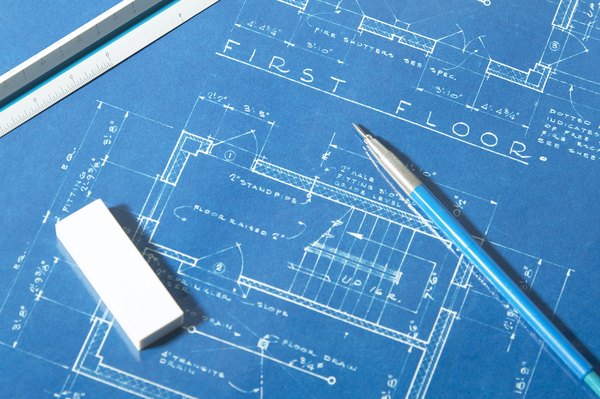
Picture of blueprint, showing some of the many calculations that go into Architecture
The mathematical "Golden Ratio" has been used in the architectural industry to create structures since the Greeks. This ratio permitted the Greeks to design the dimensions of their structures which would prove to be structurally sound and elegantly built, as some still stand today, for example the parthenon. In order to create buildings, you need to know the exact mathematical measurements, other wise the building will not stand correctly. You need to have the right measurements of the base, the walls, the roof, the sides, and many other things, Without math, the art of architecture is nearly impossible. You would have to "eye ball" everything.

The parthenon the Greeks built
Origami is another type of art that is easy to see the math needed. Origami is paper folding, which originated in early Chinese years. As easy as it sounds, it can get very complicated as you involve geometry into your creation. The more advanced figure you want to create, the more math used.

Some of the math that goes into origami.
Math is found in the roots of basic forms of art in music. Through octaves, vibrations, and sound waves it is shown that mathematics can be found at the very foundation of music. With music playing a part in my life, it was especially interesting to me seeing how intertwined mathematics is with music.

Math and sound waves go hand in hand, meaning math and music do too.
I believe math, science, and art are all relatively similar and easily work together. Yes, you are able to look at them as their own fields, but they come together as well creating objects from one end ob the spectrum like a painted flower to the other like medical discoveries. All fields compliment each other,
Henderson, Linda. “The Fourth Dimension and Non-Euclidean Geometry in Modern Art: Conclusion.” MIT Press. 17.3 (1984): 205-10. Print.
Sakoulas, Thomas. "The Parthenon." Parthenon. N.p., n.d. Web. 17 Apr. 2017.
Soundwaves. N.p., n.d. Web. 17 Apr. 2017.
The Power of Origami. N.p., n.d. Web. 17 Apr. 2017.
Writer, Leaf Group. "What Math Classes Do Architects Take in College?" What Math Classes Do Architects Take in College? | Education - Seattle PI. Seattle PI, 28 Mar. 2013. Web. 17 Apr. 2017.
Vesna, Victoria. “Math + Art.” Lecture 2.
I found your elaboration of the Chinese art of paper folding to be fascinating. I had never before considered it to be a mathematical approach, but it makes complete sense when you laid it out. As a side note, I feel that the background design and color you chose for your blogs is really a great suit for the material that you are writing because of the old map drawing at the top, which certainly relates to not just math, but art as well. I very much enjoyed reading your thoughts.
ReplyDelete